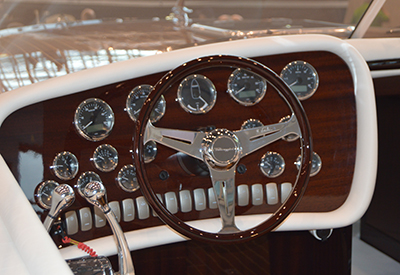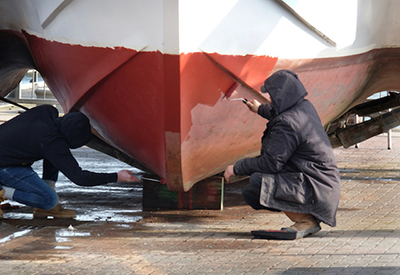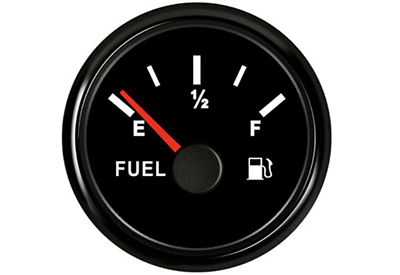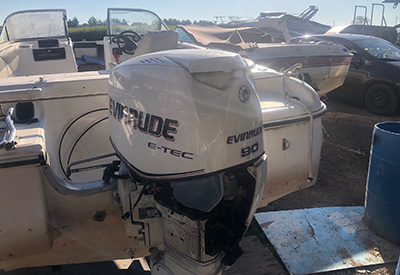Ask Andrew: Bogging? What’s that?
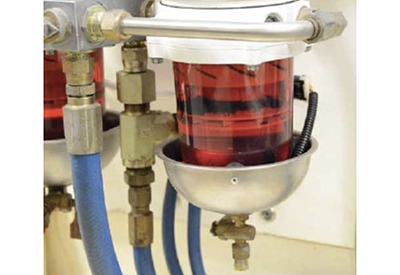
May 26, 2022
a diesel water-separating fuel filter
Mechanics use a lot of strange terms when describing problems aboard. An engine may be skipping or stuttering. It could cough or belch. It may ‘rev up’ to fast, or may run lean or rich.
A person unfamiliar with these terms will quickly be lost in the conversation. A few days ago, when speaking with a client, I forgot to speak English. I listened to the boat owner’s concerns and asked, ‘Did the engine sound like it was bogging?’. His dumbfounded expression reminded me to be clearer. ‘Bogging’ is such a common issue in today’s marine engines that it should be defined and discussed.
The best way to describe an engine bog is through an example:
Leaving dock on a warm summer day, the engine purrs at slow idle as the boat slips out of her moorings, through the slipway and into open water. Once clear, throttle is quickly increased to speed on your way. As the level is push forward, the engine hesitates and gives a muffled groan. It should be speeding up, but it slows as though it isn’t getting enough fuel to move forward. It sounds like its trying to speak with a mouthful of cotton. If more throttle is given, the engine dies off.
Bogging can happen in both gasoline and diesel engines -inboards and outboards. In the modern marine engine, most bogging incidences are caused by the engine trying to burn fuel that isn’t of sufficient quality to properly ignite. In 95% of the cases that I see, this is caused by water or other contaminants in the fuel. (This brings bad gas)
I know what you’re thinking: ‘Bad gas’ must mean that I need to get my gas somewhere else!
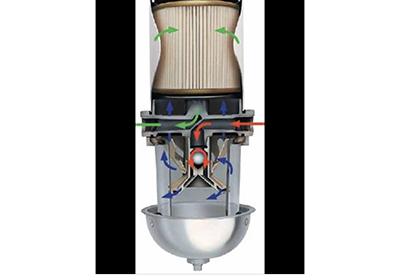 the anatomy of a primary fuel filter
the anatomy of a primary fuel filter
Not necessarily true – and there’s lots of ways that perfectly good fuel can turn to ‘bad’ while aboard. Here are a few:
1) Dirty, contaminants and sludge in fuel tanks. This sludge will often settle at the bottom on the tank, but can easily be stirred up through the boat movement in rocky seas
2) The fuel is old – fuel has a shelf-life. We don’t notice it in our cars (in most cases) because we tend to burn through a tank of fuel in faster than 6 weeks. But in the marine world, many of us use the same tank of fuel over the course of a season (or longer). Old fuel loses octane (its ability to burn), and in extreme cases can solidify into a jelly, blocking up passages, plugging spark plugs, injectors and carburetors.
3) Organisms breeding in the fuel (especially in diesel tanks)
4) Water in the fuel. Modern fuels contain ethanol which is meant to lower the harmful emissions. Ethanol is an alcohol base that can break down fuel lines, gaskets, carburetor floats, etc. Ethanol also attracts water: water builds up on the walls of fuel tanks through condensations and temperatures change, the condensation drips down into the tank, chemically bonding with the ethanol and mixing in with the fuel. When fuel is pulled into the engine, it tries to burn this watered-down gas, causing bogging.
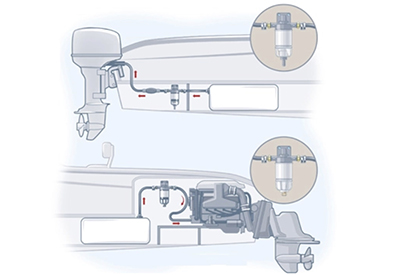 a typical fuel system for both inboard and outboards
a typical fuel system for both inboard and outboards
These four issues can be addressed fairly simply:
First: add biocides to diesel fuel, and ensure that the fuel kept aboard is fresh. When storing fuel (or if you know that you won’t use all the fuel in your tank over a long period of time), add a fuel stabilizer to slow down the break-down process.
Second: Add, check, and replace fuel filters regularly. These will remove the dirt, contaminants, sludge, gel, organisms and water that may be lurking in your fuel tank, unseen.
The ideal fuel system will have a few components:
a) The tank, where fuel is stored. The tank is filled from a deck inlet, via hose. The tank is vented to allow air to escape as fuel is added. The tank will have a ‘pick-up’ – a vertical hose that draws fuel from the lower half of the fuel tank.
b) Fuel lines. Depending on the engine type and size, these can be graded rubber fuel lines, or copper lines with secure fittings.
c) The fuel pump – creates the vacuum/pressure needed to draw fuel from the tank to the engine (almost like sucking from a straw).
d) Before arriving at the engine, the fuel should run through the filters necessary to remove dirty/contaminants/sludge, as well as any water. The often means more than one filter is necessary. The primary fuel filter should remove large particles and water. The secondary fuel filter should remove smaller particles to ensure that the fuel is as clean as possible before it hits the engines fuel pump. Often a third filter is added just before the fuel reaches the crucial injectors and carburetors.
Fuel filters should be replaced regularly, according to manufacturers recommendations. Here are a few general rules of thumb:
1) If you’re experiencing bogging, check the water-separating fuel filter and replace. In a pinch, the filter can be removed, the contents dumped into an appropriate container, and reinstalled.
2) Particulate filters (for removing debris and contaminants) should be replaced as needed, at least once annually
3) water separating filters should be drained or replaced each fall as part of the winterizing process. If any water contained in the filter is left to freeze, damage can occur before spring-start-up.
4) Filters should be replaced, not cleaned or blown with air. Cleaning and air can enlarge the strainer holes, which decreased their effectiveness. Always replace with the filter designed for your engine application for best effectiveness.
Clean fuel = better engine running and efficiency, fewer on the water breakdowns, and greater confidence when aboard!
 Andrew McDonald is the owner of Lakeside Marine Services – a boat repair/maintenance firm based in Toronto. Andrew has worked in the marine industry for 12 years and is a graduate of the Georgian College ‘Mechanical Techniques – Marine Engine Mechanic’ program.
Andrew McDonald is the owner of Lakeside Marine Services – a boat repair/maintenance firm based in Toronto. Andrew has worked in the marine industry for 12 years and is a graduate of the Georgian College ‘Mechanical Techniques – Marine Engine Mechanic’ program.
Questions or comments for Andrew? Email him directly via: askandrew@lakesidemarineservices.ca

